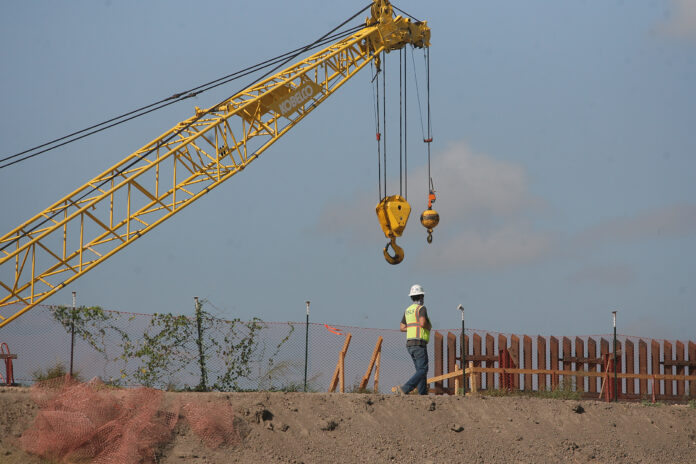
More construction along existing border levees will soon be seen around the Rio Grande Valley as a result of a November inspection by the U.S. Army Corps of Engineers.
The work will affect 6 non-contiguous miles in the Valley, according to a local U.S. Customs and Border Patrol spokesperson.
The U.S. Army Corps of Engineers formally notified CBP last month it completed an assessment that found additional segments of the levee required “remediation” in order to ensure that they met its technical requirements for certification, as well as the Federal Emergency Management Agency’s flood-protection criteria, a statement from CBP said.
The assessment was part of the Department of Homeland Security’s “environmental planning activities” meant to replace the proposed border barrier projects located within the Rio Grande Valley, Laredo and El Centro sectors after the agency announced Oct. 8 it would no longer be constructing a border wall in those areas.
“CBP will then begin environmental planning and actions consistent with the National Environmental Policy Act for previously planned border barrier system projects located within the Rio Grande Valley, Laredo, and El Centro Sectors,” a statement shared Oct. 8 read at the time.
The money allocated for wall construction under DHS’s fiscal years between 2018 and 2021 barrier systems appropriations was used for the environmental planning activities that included the levee projects in the Valley.
Although no specific locations were disclosed by CBP, the work will involve areas that need attention.
“Based on the levee safety assessment provided by USACE, approximately two additional miles of non-contiguous disturbed earthen flood-levees in RGV will need to be replaced with new concrete levee to ensure the levees meet USACE’s technical requirements for certification and FEMA’s flood-protection criteria,” the statement read.
This means about 2 miles worth of levees were “disturbed” or compromised either directly or indirectly by nearby construction activities, according to the CBP spokesperson.
“Additionally, there are approximately four miles of undisturbed earthen levees that will not require replacement with concrete levee, but that will nevertheless require construction work to restore affected drainage systems near the earthen levees,” the statement continued.
Though critics contend levee construction is similar in appearance to a border wall, the agency maintains the work is based on mitigating flood hazards.
“If not fixed, the compromised levees pose several risks, including inadequate flood protection, inadequate access and mobility for first responders, landowners, farmers, and ranchers, and increased risk of site erosion,” the statement said.




